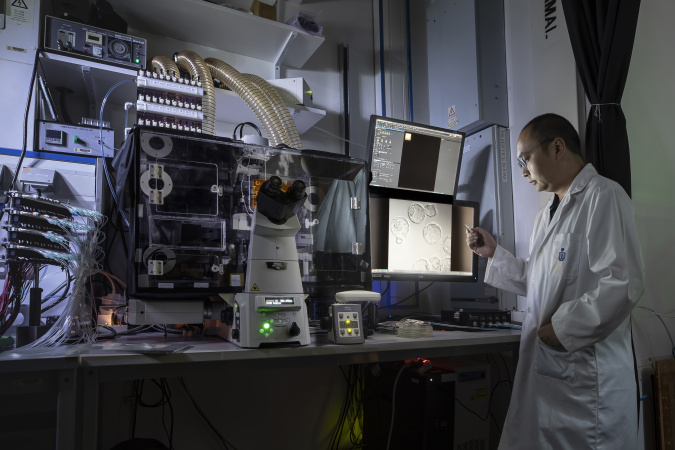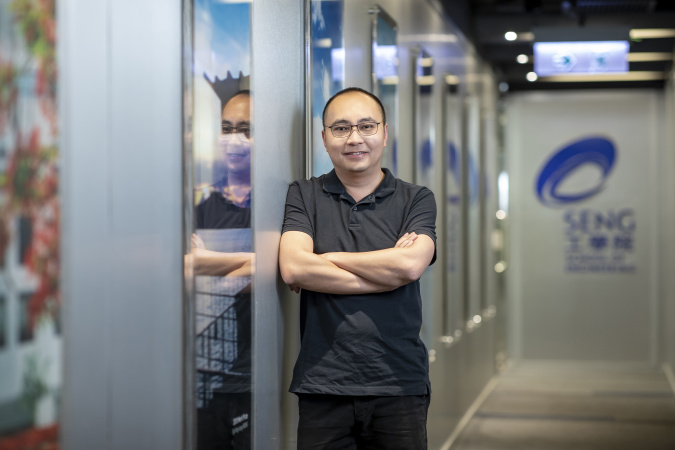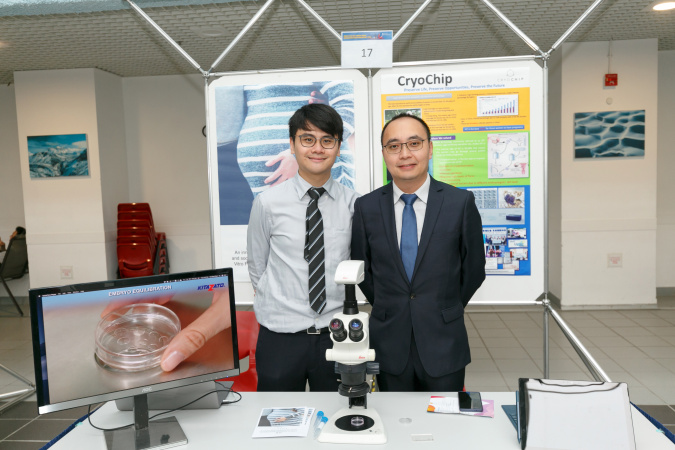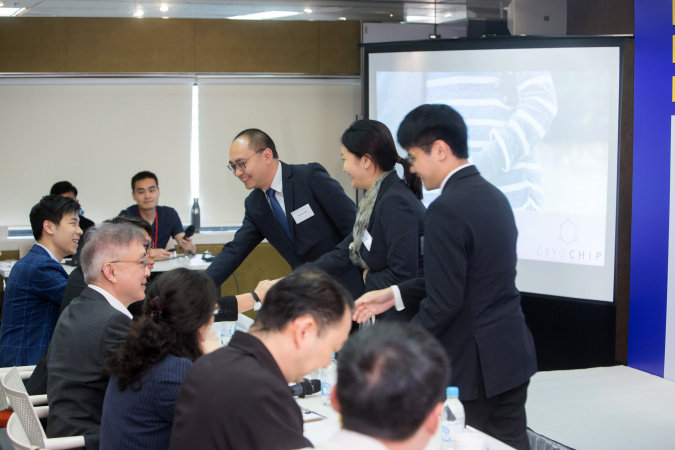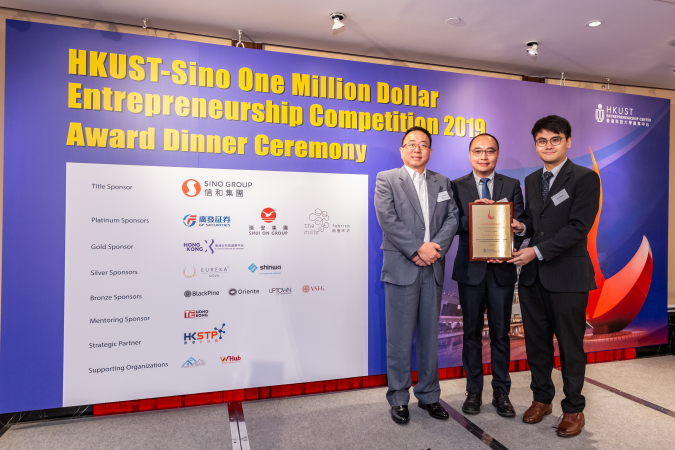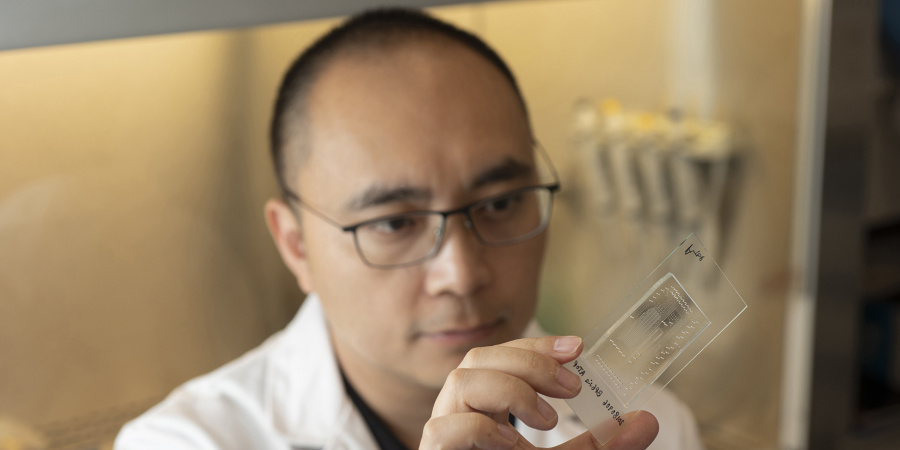Novel Device Ignites Hope for Improving Existing Solutions to Infertility
In Hong Kong, 1 in 6 couples struggles to get pregnant, compared to 1 in 10 two decades ago. In China, the infertility rate has risen to 12-15% from just 2.5% in the early 1990s. Many couples have begun to seek medical help to fulfil their desire to have a baby – there are 50 million patients with fertility problems in China. Listening to Dr. SHU Yiwei Ervin, current student of MPhil Program in Technology Leadership and Entrepreneurship (TLE) offered by the Division of Integrative Systems and Design of HKUST’s School of Engineering, talk about the pain involved in the in-vitro fertilization (IVF) process, and his hope that his startup can eventually increase the success rate of the procedure, is both moving and inspiring.
A conversation with a friend over dinner in 2015 led Dr. Ervin Shu to create a medical device that will be of profound help to couples struggling with infertility. “My friend was frustrated and on the verge of quitting his job as an IVF technician,” he recalls. “I was surprised that someone holding one of the most desirable and well-paid positions in the profession was so disheartened. I realized he was stressed out by the intensive and repetitive workload with zero margin for error.”
At the time, Ervin had been working in private equity in Shenzhen to analyze potential healthcare projects for investment, having completed an MPhil in Biology from the Division of Life Science in 2010 and a PhD in Nano Science and Technology from the Department of Chemistry in 2014. “My PhD research area was microfluidics, which can have a wide range of applications. In 2016, I decided to try to apply it to IVF.”
During IVF, a woman’s egg is manually combined with sperm in a laboratory. Given the 30-40% success rate of IVF, it often takes a few painful and expensive cycles – involving the woman taking hormonal injections and undergoing an egg-extraction procedure – to get pregnant. It can be a physically and mentally taxing experience for the couple. And Ervin’s friend had revealed that the process is fraught for medical staff and laboratory technicians too.
Birth of a solution
In 2016, Ervin and a partner in Shenzhen developed CryoChip, a medical device that automates a critical stage in the process – egg / embryo cryopreservation, which helps preserve living cells by cooling them to very low temperatures. During cryopreservation, the embryologist must carefully manipulate the eggs / embryos in different concentrations of cryoprotectant solution. The last five stages of this process must be done within 60 seconds, or the survival chances of the eggs / embryos decrease sharply.
Through his research, Ervin discovered there were existing academic papers and patents on the subject. “However, most of them were not practical enough. We wanted to develop something simple that could connect with the current IVF workflow in hospitals and medical centers.”
What they came up with was a product that removes the need for the embryologist to manipulate eggs / embryos. Instead, the apparatus delivers the cryoprotectant solution to the eggs / embryos according to a protocol. This helps improve the cryopreservation success rate from 80-99.5% to a constant 99.5%.
“Although this came about through an unintentional opportunity, what we do is a crucial part of the IVF process,” Ervin says. He does not claim that their device increases the IVF success rate, but it automates and standardizes the process of embryo vitrification, eliminating fluctuation in the performance of technicians and reducing the chance of human error.
Evolving mission
Initially, Ervin was ignorant of the suffering the IVF process entails for women. Through interviews with patients, he learnt that during the two weeks of hormone injections, women experienced excruciating pain in their ovaries, while the extraction procedure, involving eggs being extracted with a 30cm long needle, can also be painful.
He recalls a woman who underwent 10 rounds of unsuccessful procedures. “Our biggest motivation is to lower the chance of the patient having to undergo the painful embryo retrieval process repeatedly,” Ervin says.
Their mission moved a number of judging panels in the competitions they entered in Hong Kong and mainland China and gained them a series of prizes and funding, including the championship and Healthtech Award of the HKUST MBA Fosun Technopreneur Competition in 2017, the RMB500,000 championship in the 2018 Shenzhen “Dream Catcher Cup” University Students Innovation and Entrepreneurship Contest, HK$800,000 from the Hong Kong Technology Start-up Support Scheme for Universities 2019, and most recently, the President Award and GF Innovation Award of the HKUST-Sino One Million Dollar Entrepreneurship Competition 2019.
Currently, they are collaborating with hospitals, such as First Affiliated Hospital of Xiamen University and First People’s Hospital of Kunming, in performing animal and human trials.
Developing as a leader
Ervin is now an MPhil student in Technology Leadership and Entrepreneurship (TLE) offered by Division of Integrative Systems and Design (ISD) of School of Engineering.
He credits the program with helping him with“design thinking” and “pitching”, such as how to identify who to approach for interviews and to conduct them systematically. Interviews with IVF centers in Hong Kong, the mainland and even South East Asian countries, helped him understand what his future customers need.
“As a seasoned science student and technical person, I used to be focused on my own work rather than presentation skills,” he says. TLE has transformed him into an articulate speaker, able to tell a story and present a product well. “The pitching skills I picked up were key to winning these awards.”
Challenges and hopes
While the recognition of their concept and mission is encouraging, recruiting staff beyond the core team has been a challenge. “We need technical people, such as mechanical engineers, as well as an experienced person who can handle the documents to comply with regulations, such as those related to medical device manufacturing and distribution licenses in the United States and mainland China.”
They plan to set up a company and open an office in Hong Kong. Originally from Yunan province, Ervin divides his time between Shenzhen and Hong Kong.
Asked about his business goals, Ervin’s answer is unexpected. “If the company succeeds, whether through an initial public offering or a buyout, I would like to use the money to set up a fund to explore projects by HKUST students that are worthy of investment. I would like to guide these students through the start-up process as a mentor.”
Passionate about HKUST
This would be paying forward the support and guidance Ervin received during his many years as an HKUST student. He expresses his appreciation to his first MPhil supervisor Professor LI Ning, who he met at an academic conference in Shenzhen and who encouraged him to join HKUST, and his PhD supervisor Professor WU Hongkai. He is also thankful for the strong support the School and ISD have given him.
Ervin treasures his life on campus, from the beautiful environment and facilities to the strong network he has built with his fellow alumni and classmates over the past decade. “I hope I will be able to stay with HKUST as long as I can, that’s the true ultimate goal of my life,” he laughs.
